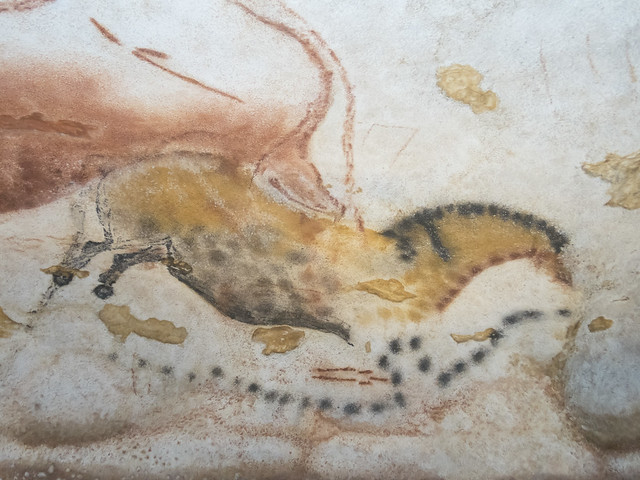
If you thought a comic book would be an appropriate medium for chronicling beer history due to pairing trivial interests you would be right about the effectiveness of the match but sorely overlooking the richness of either topic. Beer’s eclectic, long and rich history is done justice by the use of another prehistory human invention, visual representation.
Ostensibly about beer, the book provides compelling examples of lives, cultures, histories, and biological material intertwining with one another to create a rich and complex canvas. Beer happens to be the through line of this story, and a convivial topic at that. One can imagine choosing equally rich subjects and creating comparable tapestries, though undoubtedly highlighting different threads. The one advantage beer has over most other topics is its longevity.
The book kicks off with an everyman protagonist who finds himself in over his head when having to choose among beers for a get together, speaking directly to today’s boom in options and craft (beer) Renaissance. What may easily be dismissed as an inconsequential subject is given some gravitas by way of history lessons relying on archaeology, mythology, and some of the earliest known written records. We are shown a long, storied past for a drink that has for the most part been looked down upon.
The authors begin in prehistory, referencing archaeological and anthropological work, as well as ancient myths and poems that made it through to the present. The storyline starts out wide with respect to both regions and detail. Grand sweeps of time and space are covered in one chapter, bringing us to the historical stage. After some foundation-laying regarding its importance across both cultures and time the reader is presented clear outlines on the modern beer making process. This switch from long lost past to the present day helps juxtapose the changes beer has undergone and hints at the journey the reader will be taking moving forward, namely the traversing of ignorance and superstitious awe at the fermentation process, even discovering this process, to today’s technologically precise operations.

For a large part of the story the focus is on cultural and societal trends. Individuals are sprinkled throughout but not until the Enlightenment and the Industrial Revolution are names of specific people highlighted. As we approach modern times, accentuated by machines and science, we begin to hear of people who had an oversized impact on society, and beer specifically. This general sweep of history places beer among the many unnamed masses, perfectly appropriate for a mass beverage. Even while remaining general the book touches on gender, state power, taxation, trade, and the eclipse of religion/church authority. Against these various backdrops specific beer styles are situated. This coupling of history with beer interweaves the significance of the storylines that helped spawn and develop specific styles. Many beer styles were never guaranteed to come about, though fermented beverages appear inevitable, but were rather contingent on history, chance, and opportunity. Seen in this light it makes one wonder in what way other contemporary quotidian artifacts are dependent on the vagaries of circumstances and what we can learn from them about ourselves.
The chronological elements are chosen to highlight the advancements in beer making that came about as a result of larger societal influences, both good (science) and bad (collapse). Each of these thematic vignettes (e.g. the collapse of Rome, monastic living, the Industrial Revolution) is punctuated with a one page description of a particular beer style that draws its founding from the developments described in the respective chapter. This one pager carries the central information on beer appearance, aroma, taste, alcohol level, flavor and food pairings, plus additional historical trivia (which can be viewed as conversation topics, if nothing else). These end of chapter snapshots help to reinforce both the history, by tying it to a physical and readily available beer, and the beer characteristics by providing more context to their origins. It is a clever and familiar way of making the context both more interesting and more memorable.
The book is packed with a wealth of historical, cultural, and anthropological information. The “snappy” images belie the sophistication and expert integration of a ton of knowledge. Taking the chapter on Prohibition as an example, one is introduced to the temperance movement, the identification of beer as a form of alcohol (before then drinking as a scourge was targeted at rum, gin, and whiskey; but not after Joseph Livesey was done with it), the puritanical all-or-nothing American temperament, the global expansions and alliances of European powers leading to World War I, the framing of Germans as antagonists and by extension making all German products off-limits (e.g. the renaming of hamburgers and frankfurters) including beer, and the passage of the 18th Amendment while many young men were overseas fighting. Prohibition lasted 13 years and the comic book is able to tackle heavy topics such as corruption, bootlegging, organized crime, and unemployment against the backdrop of the Great Depression within a matter of a dozen pages.

Consistently, the knowledge imparted is clearly laid out in an assortment of visual idioms and textual content. The characters and stories chosen are engaging, supplying shading and nuance to both historical and beer buffs alike.
One criticism of the book, ironically exacerbated by the occasional image reference, are the lack of cited sources. Having read several books on beer (not to brag, Mom) and a couple on the topic of Prohibition specifically (e.g., Last Call) I feel confident in the reliability of what is presented but for the less familiar or more skeptical, additional references would be helpful. Thankfully, the accompanying website does make up for this, amongst other supplemental information. This complement resource is critical to fact checking but also helpful, by design or accident, in keeping the book a reasonable length.
In covering so much historical content in under 180 pages, the book provides a tight and coherent story of beer in the Western and increasingly global market. Many of the pieces have been rehashed in dozens of other books and among beer drinkers often enough. Here the patchworks are sewn into a coherent quilt. As with most history topics we are reminded that new things are not in fact new and the changes we experience have come before, though wearing different clothes. I refer here specifically to the introduction of hops into European beer and the commoditization of the beverage as a result. My mind reflexively jumps to mid-20th century America when commoditization is mentioned. If I give it any more thought I remind myself of the ice houses and railways of the late 19th century. Putting by pint down to reflect still further, I would have to give credit to the mechanical/technological innovations of the Industrial Revolution. The story of hops becoming the go-to add-on in making beer more palatable (i.e., less sweet, and preserve better) reminded at least this reader that we have seen this commoditization many times before (starting at least as early as medieval Hamburg). History is enjoyable and worthwhile for many reasons. The details and personalities often intrigue us most, but the underlying currents we usually only glimpse at can be the most edifying and provide the best hints at how interconnected things are, that changing one thing here may have a cascading and unintended effect elsewhere.
I would recommend this book to anyone with an interest in beer. Even after having read several other books on the subject I found the presentation refreshing, while picking up new bits of information I had either not known or forgotten after countless pints over the years.
The book touches on history, science, economics, politics, and more, interweaving widely diverse topics and orders them into a coherent whole, resulting in a story revolving around an enjoyable, and for those who never dug any deeper beforehand, very interesting subject, beer. In the early 21st-century beer, real beer, is enjoying a revival. There are more breweries than ever in the US and many other countries as well, tons of styles are available, either by invention or by rescue from historical obscurity and extinction. Many young people are enjoying the experiences of beer drinking. Many times they associate with this craft revival as a way to say something about themselves. This book is a meditation on what beer says about all of us.

Notes
Cave painting Photo by Dave Thomas on Flickr
Looking at bottles Photo by Caroline Avelar from Pexels
Raid at elk lake By Archives of Ontario, C.H.J. Snider fonds, Reference Code F 1194 S 15000, I0015265. - ville.montreal.qc.ca - archives de l’ Ontario, Public Domain, https://commons.wikimedia.org/w/index.php?curid=7120910
People having a toast Photo by ELEVATE from Pexels